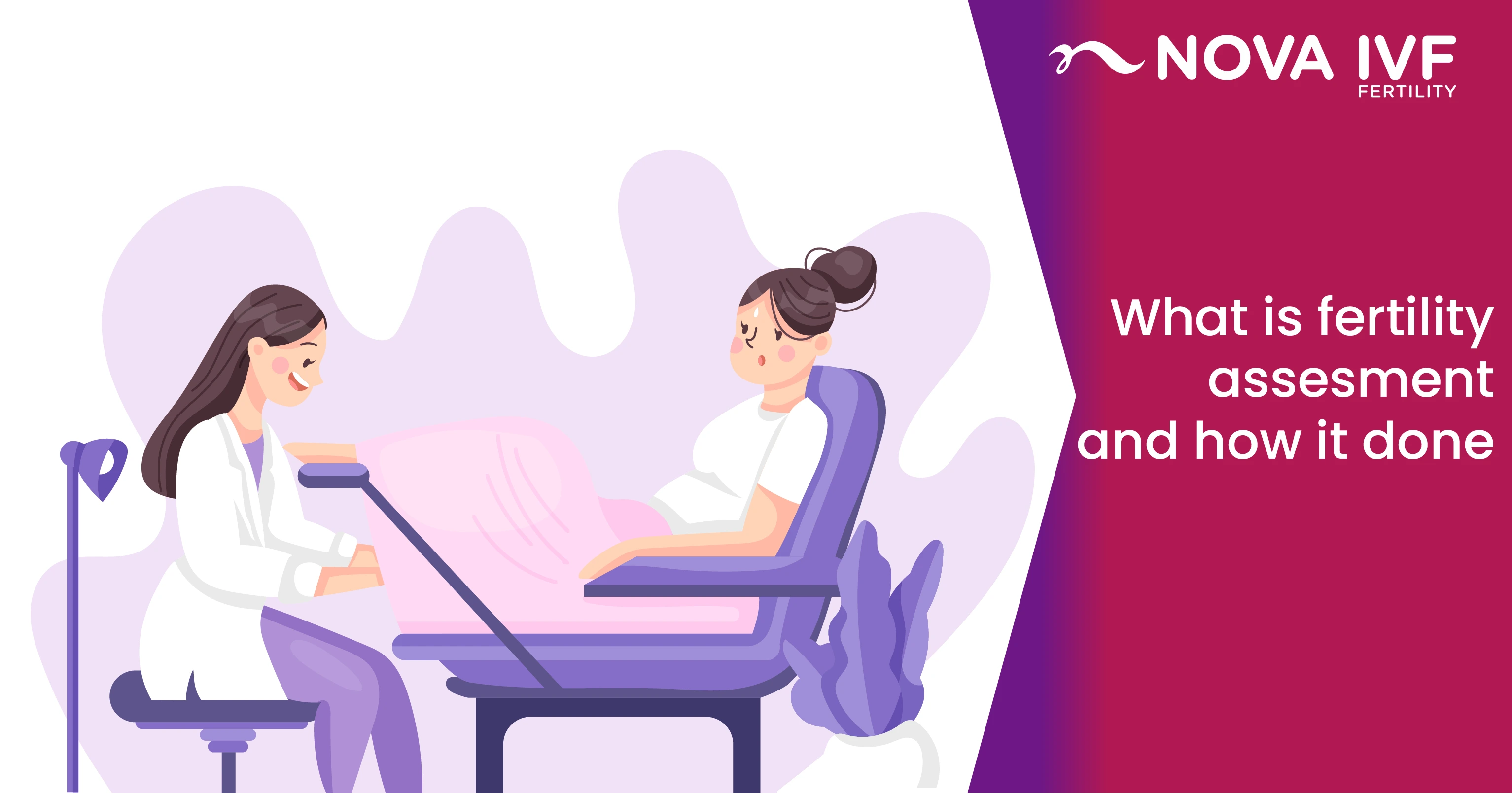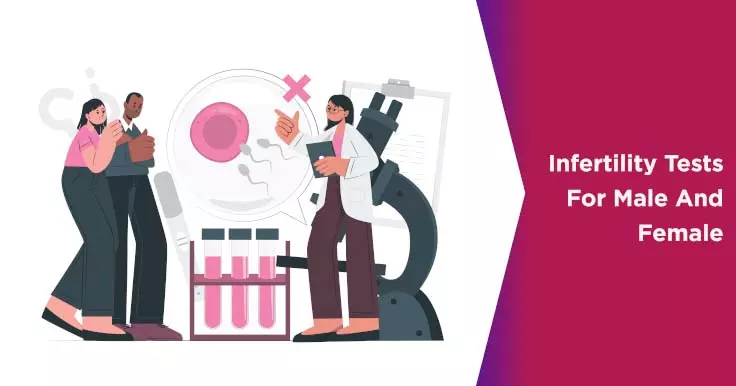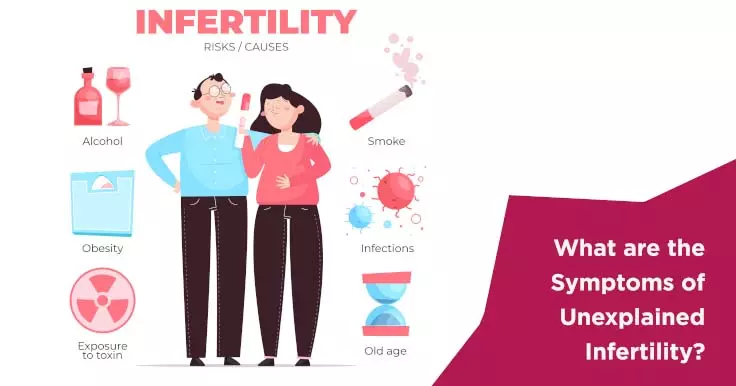Infertility is a big concern for numerous couples because it can completely change their lives, which they have always planned for themselves. But infertility may not be as bad as you may believe. Although a person may be declared infertile after a full year of attempting to conceive, a year might not mean much.
If a couple has been trying to conceive for a year without any success, both partners must consider going through a medical and physical examination, including fertility testing. Fertility tests for women and sperm analysis for men should begin immediately. This page discusses when to consider fertility testing and various fertility tests for females.
Book your Appointment
When to Consider Fertility Testing
Some individuals become pregnant quickly, while others may take longer. If you haven't conceived after over a year of trying, you should see the doctor. Women over the age of 36 years, as well as anyone who suspects they may have problems with fertility, should consult their doctor as soon as possible.
In addition to this, women with the conditions listed below should consider fertility testing:
- Diagnosed reproductive issues in the ovaries, uterus, or fallopian tubes, including irregular, heavy, or absent periods.
- Repeated miscarriages.
- History of pelvic pain, endometriosis, or pelvic inflammatory disease
- Partner with uncertain or diagnosed male infertility.
Fertility Tests for Women
The initial stage to checking fertility in woman involves a consultation with a fertility doctor. This session will include an in-depth discussion of your past health conditions and lifestyle. Topics will cover use of birth control, menstruation and history of pregnancy, past and present sexual behaviours, surgical history, medications used, other medical conditions, and your lifestyle/working environment.
A full physical examination, including a pelvic exam, will be performed.
Following this first consultation, your doctor may wish to perform some preliminary fertility tests for women. This initial testing will determine ovarian reserve testing, confirm if and when ovulation is occurring, and evaluate the uterine and ovarian functioning during the ovulation cycle.
Ovarian Reserve Testing
Ovarian reserve screening is an important part of checking fertility in woman. These tests evaluate both the quality and quantity of a woman's eggs, which can have a direct impact on her ability to get pregnant. Following are some of the common tests involved during ovarian reserve testing:
- Follicle-Stimulating Hormone (FSH) test: FSH is a hormone that stimulates the formation of ovarian follicles. High levels of FSH may indicate a low ovarian reserve.
- Anti-Mullerian Hormone (AMH) test: AMH is a hormone released by growing follicles in the ovaries. Lower AMH levels may indicate a reduced ovarian reserve.
- Antral Follicle Count (AFC): This is a vaginal ultrasound scan that determines the amount of resting follicles in the ovaries. A lower AFC could indicate a decreased ovarian reserve.
Ovulation Assessment
Ovulation fertility tests for women can be grouped into the following:
Ovulation testing
This involves checking your basal body temperature charts and utilizing ovulation prediction kits, blood tests, and ultrasound, to determine whether or not ovulation is taking place.
Ovarian function testing
These tests look at the way the hormones in your body function and work during the ovulation cycle. Tests include performing follicle stimulating hormone (FSH) on day 3, oestradiol (oestrogen) on day 3, ultrasound (to verify ovulation), and blood tests to assess inhibin B levels.
Luteal Phase testing
This will include progesterone levels, further hormone tests, and perhaps an endometrial biopsy.
Hormone testing
The majority of this testing will focus on comprehensive hormone tests.
The hormone evaluation and fertility tests for women include the following:
- Follicle stimulating hormone
- Luteinizing hormone
- Progesterone
- Prolactin
- Oestradiol
- Total testosterone
- Free testosterone
- Free T3
- Androstenedione
- DHEAS
Additional Fertility Tests for Females in the Initial Evaluation Cycle
Following are some of the additional tests that are often performed in the initial evaluation cycle:
- Cervical mucus tests: This consists of a post coital test that assesses if sperm can enter and thrive in the woman’s cervical mucus. It also includes bacterial screening.
- Vaginal ultrasound: These are used to determine the uterine lining (endometrium) thickness, track follicle growth, and assess the ovaries and uterus condition. An ultrasound can be performed between two and three days after to ensure whether an egg/ova has been successfully discharged.
If the above-mentioned tests along with the semen analysis show normal findings, your fertility doctor may prescribe additional testing. These tests can involve:
Hysterosalpingogram (HSG):
An X-ray image of the fallopian tubes and uterus. Via the cervix, a dye is administered into the fallopian tubes and uterus, allowing the radiologist to determine whether there is an obstruction or another issue.
Hysteroscopy:
This procedure may be utilized if an HSG shows evidence of any abnormalities. For this procedure, the hysteroscope is passed into the uterus via the cervix, allowing your fertility expert to examine any abnormalities or growths. The hysteroscope enables the doctor to take images that can be retained for future analysis.
Diagnostic laparoscopy:
A procedure typically performed under general anaesthesia using a thin fibre-optic telescope. A laparoscope is advanced into a woman's abdomen to allow a view of her uterus, ovaries, and fallopian tubes. A laser can remove any abnormalities identified, such as adhesions, endometriosis, or scar tissue. It is crucial to note that before doing this test, you must verify whether or not you are pregnant. This test cannot be done if you are pregnant.
Endometrial biopsy:
It is a procedure that involves scraping only a small portion of tissue material from the uterine lining shortly before menstruation. This method is used to test whether the lining is sufficiently thick to allow an egg that has been fertilized to implant and develop. Before doing this test, you need to ensure that you aren't pregnant.
It is important to note that not all women need to undergo these tests, and your doctor will know which ones to recommend based on your specific condition.
Takeaway
Female infertility can be a difficult and stressful experience; however, by determining the root cause of the fertility problem, women can take an informed next step. If you are somebody facing issues conceiving, it is worth taking a consultation with a fertility expert and undertaking appropriate fertility tests for women recommended by your doctor as your first steps towards overcoming infertility.
Frequently Asked Questions
IVF was initially developed for women who had obstructed or missing fallopian tubes, and it remains the preferred method in these cases. It is also utilised when other conditions exist, such as male factor infertility, endometriosis, and unexplained infertility, where no underlying cause of infertility can be identified. Our professionals will analyse your medical history and direct you to the most appropriate therapy and diagnostic tests for you.
Yes, definitely, vitrification of eggs and embryos has proven to be beneficial because it increases the survival rates of eggs and embryos and improves overall pregnancy rates through IVF.
Yes, several successful pregnancies have been achieved using vitrified embryos or eggs. The rate of success is comparable to those obtained with fresh eggs or embryos.
Women are born with roughly two million eggs within their ovaries. Every month, approximately 11,000 eggs die prior to a girl's adolescence. Thus, during her adolescence, a woman has only roughly 300,000 to 400,000 eggs left. From this point forward, around 1000 eggs are used each month. This is unrelated to any method of pregnancy, hormone production, birth control, lifestyle, health, or nutritional supplements. Menopause occurs when a woman no longer has viable eggs.
 Infertility Counselling
Infertility Counselling Female Infertility Treatment
Female Infertility Treatment Andrology Treatment
Andrology Treatment Fertility Enhancing Surgeries - Female
Fertility Enhancing Surgeries - Female Fertility Enhancing Surgeries - Male
Fertility Enhancing Surgeries - Male Endoscopy Treatment
Endoscopy Treatment IUI Treatment
IUI Treatment IVF Treatment
IVF Treatment ICSI Treatment
ICSI Treatment Advanced IVF Solutions
Advanced IVF Solutions Embryology
Embryology Vitrification Egg, Embryo, Sperm Freezing
Vitrification Egg, Embryo, Sperm Freezing Preimplantation Genetic Testing (PGT)
Preimplantation Genetic Testing (PGT) Donation Program Embryo / Egg / Sperm
Donation Program Embryo / Egg / Sperm Self-cycleTM IVF
Self-cycleTM IVF

 Self-cycleTM IVF
Self-cycleTM IVF








